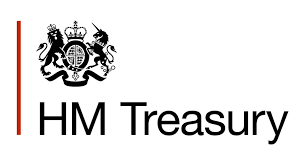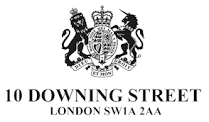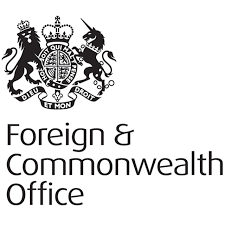HISTORIC PRESS RELEASE : New Proposals to Tackle Child Poverty and Open Opportunities to all [April 2001]
The press release issued by HM Treasury on 26 April 2001.
A consultation on two new saving and asset proposals – the Saving Gateway and the Child Trust Fund – to tackle child poverty, break the cycle of disadvantage and open savings and wealth ownership to all was launched by the Government today.
Speaking at a press conference in Downing Street, the Prime Minister, Chancellor Gordon Brown, Education Secretary David Blunkett and Social Security Secretary Alistair Darling set out Government proposals to give all children a running start in life and help lower-income earners plan for their future and retirement.
Saving and Assets for All sets out plans for:
- The Saving Gateway, which will provide lower-income earners incentives to save by offering to match savings with additional contributions paid by the Government.
- The Child Trust Fund, which will provide a cash lump sum to all children at birth, to be kept in special accounts until they reach adulthood, thus offering access to the opportunities that asset-ownership brings. The scheme will also offer parents, relatives and children themselves the opportunity to make additional contributions to the Child Trust Fund.
Prime Minister Tony Blair said:
“We are committed to extending opportunity to all. All our children – especially the most disadvantaged – should have the chance of a proper start in life. Getting people into the savings habit, and making sure children have a real financial springboard, is a vital part of that. Piece by piece, we are dismantling the barriers – no matter what they are – which hold people back.”
Chancellor Gordon Brown said:
“Our aim is the abolition of child poverty in a generation – and to open saving and wealth ownership to all. And to do that, we plan not only to improve the weekly incomes on which a child is reared but to make it possible for them to own and value wealth when they reach adulthood.
“This Government has already done much to extend the benefits of long-term saving through the introduction of schemes such as Individual Savings Accounts, Stakeholder Pensions, our all employee share ownership scheme and the new Pensioner Credit. The new Saving Gateway will mean lower income families not simply having interest payments tax free – the Government will match the savings people make. And the new Child Trust Fund will make it possible for children to own and value wealth when they reach adulthood.”
Education Secretary David Blunkett said:
“The new Child Trust Fund and the Savings Gateway will provide a vital first step on the road to self-reliance – taking people out of the dependency culture and giving them a real stake in society. Assets for all will be the fourth pillar of the welfare state.
“Young people will start out in life with financial backing behind them – helping to ensure disadvantage is not passed down from one generation to the next. It’s about the state helping you to help yourself – a something for something approach so that people can take greater responsibility for their own future.”
Social Security Secretary Alistair Darling said:
“We are determined to build a new savings culture in this country. Saving gives people independence as well as providing security in difficult times and comfort in old age.
“We want every child in Britain to have the confidence and security that savings can bring.”
Mr Darling said that the Government’s introduction of Stakeholder Pensions had extended choices to millions of people and cut the cost of pension saving across the board.
“Whereas the charges on some personal pensions could rise as high as 30 per cent with Stakeholders the management charges are capped at 1 per cent a year.
“This Government is determined to reward everyone who saves – not just a few at the top. For the first time ever the tax and benefit system will reward and encourage saving for everyone. Today’s proposals are another step in making opportunity for everyone a reality.”
Notes to Editors
1. The proposals in the consultation document are the result of work following on from the Treasury’s report Helping People to Save, published with the Pre-Budget Report in November 2000. More details are contained in the attached factsheet.
2. Copies of the consultation document can be obtained from the Treasury Press Office or by clicking on the link below.
Savings and assets for all
The Government recognises the importance of savings in providing people with:
- security if things go wrong;
- comfort in old age and retirement; and
- independence throughout their lives
The Government has already achieved a great deal in encouraging more people to save through the introduction of Individual Saving Accounts. ISAs have succeeded in extending the benefits of saving, both in terms of the amount of money being saved, and the number of new savers from lower down the income scale. Stakeholder pensions will extend the generous tax reliefs available to contributors to private pensions to those on low or irregular incomes, who, because of high charges, were disincentivised from saving in private pensions before.
The Government recognises that more needs to be done to extend the benefits of saving to lower-income earners. 46 per cent of those on household incomes of less than £200 and 43 per cent of those on less than £300 have no financial savings at all (excluding housing and pensions, but including current accounts). The Government also recognises that the tax reliefs offered by existing schemes, such as ISAs and stakeholder pensions, may not succeed on their own in encouraging those on lower incomes to save for themselves.
Therefore, the Government is announcing consultation on a new type of saving scheme for those on low incomes. This scheme is designed to act as a kick-start to bring these people into the habit of saving. The Saving Gateway account, which will be available only to those on lower incomes, will offer to match every pound saved in the account with a direct contribution from the Government. The Saving Gateway will run for a fixed period of time, after which savers will have the opportunity to transfer their saved assets into an existing vehicle – such as an ISA or a stakeholder pension or the Child Trust Fund (see below). The Saving Gateway proposal will also provide the financial education, information and advice needed to help people make the right financial choices for themselves.
The Saving Gateway will therefore act as a catalyst towards starting those on lower incomes on the road to greater financial independence, by giving them the financial assets and information necessary to take advantage of existing measures such as ISAs and stakeholder pensions.
As well as wanting to encourage the process of saving, the Government also believes it needs to provide more people with the immediate benefits of owning financial assets from an early age. There is compelling evidence to suggest that people with access to financial assets at the start of their working lives will enjoy significantly improved life-chances over those without such access. The Government therefore wants more people to be able to have the running start that owning financial assets brings.
Therefore, the Government is announcing consultation on a Child Trust Fund which will provide every new baby with an endowment to be saved for their future. The Child Trust Fund will be universally available, with higher levels of endowment to the children of lower-income parents, to ensure that the most help goes to those likely to need the greatest levels of assistance. The Child Trust Fund will run until children reach a certain age – perhaps eighteen or twenty-one – at which point they will gain access to their funds.
The Child Trust Fund will also allow parents, relatives, friends or the child in whose name the account is held, to make additional contributions in order to maximise the value of the assets they will have access to when they reach adulthood. Therefore, in addition to improving the asset-holding of future generations, the Child Trust Fund will be focus of the Government’s attempts to encourage these future generations to begin saving for their own futures from an early age. As such, the Child Trust Fund is a complementary policy both to the Saving Gateway and to existing measures such as ISAs and stakeholder pensions, in addition to addressing the problems of asset-poverty that many of today’s children will face in adulthood.
The consultation document asks for views on a wide range of practical issues, including:
- The best way of defining eligibility for the Saving Gateway and for the higher rates of endowment under the Child Trust Fund.
- The maturation span for each type of account.
- The questions of whether savers will have access to contributions made to each type of account, and whether there will be any restrictions placed on use of assets on maturation.
- The tax treatment of contributions into each type of account.
- Exact levels of endowment in the Child Trust Fund, and limits on additional contributions made into the fund.
- Exact levels of matching contributions in the Saving Gateway, and limits on contributions eligible for matching.
- The best way to integrate financial education, information and advice into delivery of both schemes.
- The role of private-sector financial services providers in delivering these schemes.
- Investment strategies for funds held in each type of account
Illustrative Examples of Saving Gateway and Child Trust Fund
The following examples show how the Saving Gateway and Child Trust Funds might work to deliver an asset base to all children, with additional incentives to save for families on lower incomes. The assumptions and figures used in these examples are for illustration purposes only, and do not represent the Government’s thinking on how final Saving Gateway or Child Trust Fund schemes would operate. Examples given below assume a 2.5% real rate of return on funds held in Saving Gateway and a real rate of 5% in Child Trust Fund accounts.
The Saving Gateway
The following illustrative assumptions for the Saving Gateway are used in calculating the example:
- that the Saving Gateway scheme is open to families or individuals earning at or below a set threshold for eligibility;
- that the Saving Gateway scheme lasts three years from the time that an individual opens it; and
- that the Government matches every pound put into the account, on a 1:1 basis, up to a monthly maximum of £50, the equivalent of an annual maximum of £600.
Example 1: Anne, who earns less than the threshold for eligibility, opens a Saving Gateway account and saves £25 a month for the full three years of the scheme. When the account matures, the value of Anne’s Saving Gateway will be £1,870 in real terms, adjusting for future inflation. This total will be comprised of:
- £900 of Anne’s own regular contributions;
- £900 of matching funds contributed by the Government; and
- £70 interest (which, for the purposes of this illustration, has been calculated on a monthly basis).
Child Trust Fund
The following illustrative assumptions for the Child Trust Fund are used in calculating the examples below:
- that for parents below a threshold income level, the Child Trust Fund pays an endowment of £800 for each child;
- that the endowment will be staggered over time, with £500 paid at birth, and further tranches of £100 paid at ages five, eleven and sixteen;
- that for all other parents, the Child Trust Fund pays a total endowment of £400, similarly staggered into an initial payment of £250 at birth, followed by three payments of £50 at ages five, eleven and sixteen.
Example 2: Daphne and Eric have an income below the threshold. When their baby, Jane, was born, the Government paid £500 into a Child Trust Fund for Jane. Janes grandparents also make regular monthly contributions of £5 a month into her Child Trust Fund. By the time she reaches the age of eighteen, Jane will have received further payments of £100 from the Government on each of her fifth, eleventh and sixteenth birthdays. When her Child Trust Fund matures, Jane will have access to assets worth £3,376 in real terms, comprised of:
- a £800 endowment from the Government;
- £1,080 of regular contributions from her grandparents; and
£1,496 of interest, calculated monthly.
Example 3: In Example 3 above, when Jane is born, Daphne decides to start saving in a Saving Gateway. Like Anne from example 1, Daphne saves £25 a month, and receives matching support from the Government. At the end of the three-year lifetime of her Saving Gateway account, Daphne has accumulated £1,870 (including matching payments and interest). Daphne decides to put £1,000 of this amount immediately into her daughter Jane’s Child Trust Fund. She invests the remainder in a mini cash ISA. When Jane’s Child Trust Fund matures, it will have a total value of £5,455 in real terms, comprised of:
- a £800 endowment from the Government;
- £1,080 of regular contributions from her grandparents;
- a £1,000 lump-sum contribution from Daphne’s Saving Gateway; and
- £2,575 of interest, calculated monthly.
Example 4: Bill and Claire – who have an income above the threshold level – give birth to their first child, John, and receive an initial endowment of £250 into John’s Child Trust Fund. Bill and Claire make regularly monthly contributions of £10 a month into John’s fund, until he is eighteen. John also receives additional payments of £50 from the government on his fifth, eleventh and sixteenth birthdays. When John turns eighteen, the value of his Child Trust Fund will be £4,288 in real terms, made up of:
- a £400 endowment from the Government
- £2,160 of regular contributions from his parents
- £1,728 of interest, calculated monthly.



